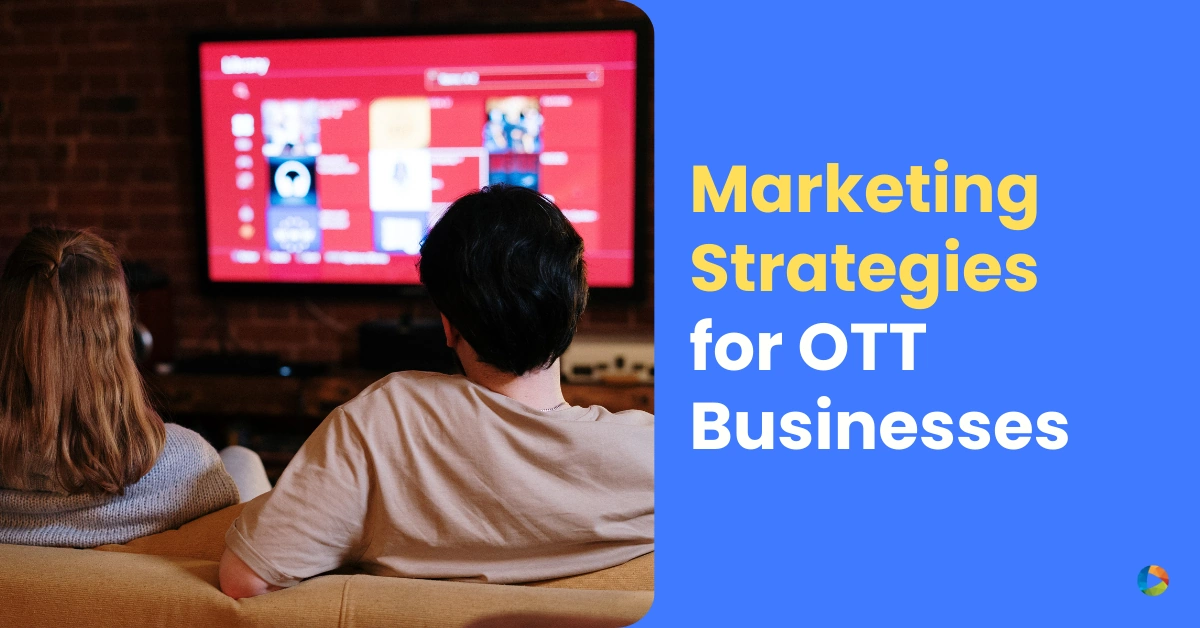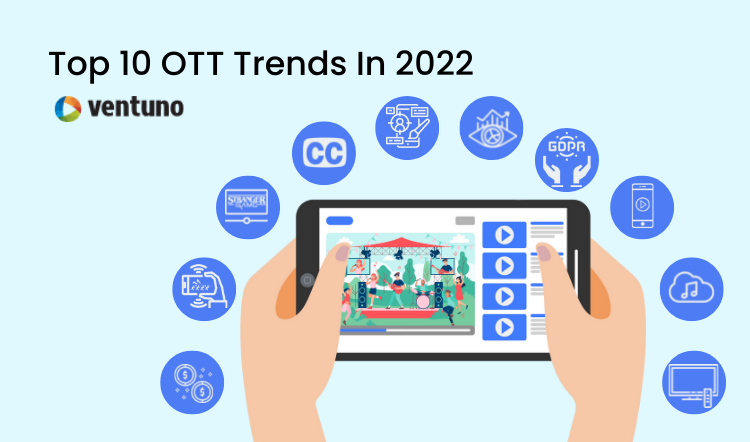What is PPV and is it right for your video business?
Last Updated on March 31, 2023 by Anjana Devi
Broadcasters and content producers are evolving their products and exploring new business models. One such way to monetize your content is by implementing pay-per-view with your live streams or on-demand videos.
There are many other models to monetize the streaming business, including SVOD (Subscription video on demand) and AVOD (Advertising video on demand). However, this guide focuses on PPV monetization.
Table of Contents :
Difference between PPV and other VOD models
The Benefits of Pay-Per-view Streaming
Is PPV monetization right for your video business?
Choosing the Right PPV Platform
The Evolution of PPV Videos
Pay-per-view (or PPV), as a revenue model, was first introduced in the late 1940s. But it gained traction when HBO applied the system to telecast big events for a small fee. The boxing match between Muhammad Ali and Joe Frazier in 1975 was streamed on a pay-per-view model. Several decades later, PPV streaming became a staple in cable television.
Today, movie production giants such as Universal Pictures are moving to PPV, with several of their films available for rent on Amazon Prime and Apple TV. Disney, too, premiered its latest offering ‘Mulan,’ on DisneyPlus for $30 on September 4, 2020.Did you know that?
- In the Pay-per-View (TVoD) segment, the number of users is expected to amount to 895.8m users by 2026.
- The average revenue per user (ARPU) in the Pay-per-View (TVoD) segment is projected to amount to US$13.54 in 2022.
This shows PPV remains a big market for broadcasters and content producers, and its focus going forward is a no-brainer.
What is PPV?
Pay-per-view is a video monetization model wherein consumers pay for only what they watch.
Also known as TVOD, or transactional video on demand, it enables consumers to watch films, TV series, and live streams whenever they want and pay for every individual video.
YouTube Movies is the most popular example of PPV monetization. You can buy or rent a movie for a one-time fee. Other examples include sporting events like UFC, where people pay to watch mixed martial arts matches, and Google Play store where you can buy individual videos.
Difference between PPV and other VOD models
Difference between PPV and Subscription Video on Demand (SVOD)
Although PPV (TVOD) and SVOD stem from the same notion that viewers can watch premium content that is not otherwise available to them there is a significant difference in how viewers pay for the content and the span of access.
The viewer is only charged when they chose to purchase a specific movie/show in the PPV model. Whereas in an SVOD model they are charged on a monthly basis and they can access any number of videos
Difference between PPV and Advertisement based Video on Demand (AVOD)
Though the viewers are free to pay only for the videos they chose to access in both the models, how they pay for it is the difference.
While the users pay using their credit cards and other payment options in a PPV setup, they pay by sitting through ads in an AVOD model.
PPV is best suited for fresh and premium content, on the contrary AVOD is for the catch-up and less premium content.
Monetizing with the PPV Model
PPV streaming enables the consumers to watch a live stream or on-demand videos for a one-time cost. Yet again, there are two frequent applications of PPV or TVOD. You can either make the video available for a pre-decided time (say 2 days) or give users the option to purchase the video for unlimited time.
So if you are starting your video content distribution business, use this model to introduce people to your offering without expecting them to subscribe for a longer period immediately.
In this day and age, many OTT platforms and TV houses also offer PPV options. For instance, SimplySouth, an online entertainment platform comprising 2000+ South Indian movies, enables customers to rent a movie if they don’t want to subscribe for a month or an entire year.
Japanese-owned SKY PerfecTV! allows its customers to receive one-click PPV access to hundreds of channels offering global sporting events, movies, and specialty programming.
Pay-per-view is an appealing option for a content owner as it allows you to gain revenue even if you are dealing with a small or very niche audience.
While AVOD models favor having large, predictable audience sizes, and you get paid based on impressions, TVOD, on the other hand, can generate revenue from much smaller audiences.
The Benefits of Pay-Per-View Streaming
1. PPV streaming is perfect for launching exclusive content
When YouTube first launched its rental service a decade ago, little did anyone know the channel would be a perfect mix of traditional YouTube videos and a live stream. Today, it lets consumers experience a new video for a small fee – just like a movie premiere – no strings attached!
PPV is an excellent way to attract a casual consumer – someone who doesn’t want to spend much time online but has taken a keen interest in your brand and wants to interact with it.
For example, offer consumers a discount on renting a yet-to-be-released movie, a month or more in advance.
2. PPV streaming is easily accessible and affordable
Think UFC, and it is hard to give pay-per-view live streaming a miss! In August 2020, a UFC event averaged 831K viewers on ESPN – the most viewers for a PPV prelim since May.
While its customers get to watch a wrestling match for a one-time cost in real-time, companies that sponsor, host or invest in them earn substantial revenues.
So if you stream live content and want to keep attracting customers at a later date, make its recording available on-demand so that those who missed the live stream can still pay for it and watch it at their convenience.
Depending upon the production, include conference highlights, the ten last minutes of a game, post-match interviews to promote more consumers to pay for a single piece of content.
3. PPV streaming fulfills the increased demand for exclusive sports and esports
Besides UFC, consumers also prefer to watch other sporting events such as soccer, cricket, and mixed martial arts in real-time or as recordings for a fee.
Such live sports obviously have a higher demand than a previously-released match or season. This will help you determine the most revenue-generating content and price it right. Look at factors such as operating expenses and the length of the video.
In the beginning, you might have to set a low rate to attract more customers. But in the long run, it is vital for balancing between growing viewership and being paid adequately. Remember, each broadcast is a revenue source for you.
4. PPV streaming has comparatively low bandwidth costs
With PPV, people stream what they pay for. This is different from SVOD, where people can watch hundreds of videos after paying their monthly fees.
As people pay for each video, your costs are better controlled. You no longer have to worry about that superuser who streams 14 hours a day at 1080p.
This also helps you predict your bandwidth costs and manage your finances in a better way.
Is PPV monetization right for your video business?
These four questions will help you decide:
1. What kind of content do I have?
While any content could be put up over pay-per-view, certain content types thrive more than others. You need to understand that every video is competing with other video content as well.
For instance, selling an Instagram video course might be tricky if another authority source gives it for free. With this in mind, here are content types that might work well for pay-per-view more readily.
- Movie premiering
- Live streaming
- Education and workshop content
- Talk shows
- Sporting events
- Spiritual content
Does your content fall under any of these categories? If yes, then you can think of monetizing your videos with PPV.
2. Is my video content quality high?
No one will pay for something available on YouTube for free. However, if you deliver fresh and compelling content to your customers, you will be able to retain them for more than just a video.
Now that everyone is staying home, and there are more OTT options than ever, your PPV live stream business success depends on the content value you offer to your customers.
3. Is my marketing strategy on-point?
You need to have a solid marketing strategy to ensure that your high-quality PPV video content reaches your audience. You can begin by promoting your videos on your website, social media channels, and other relevant platforms.
If the budget permits, run sponsored online ads and Google Adwords to fetch as many new viewers as possible. Advertising on radio and print is also advised depending upon your industry niche and provided you have money to spare.
4. Am I flexible with my content timeline?
You must be flexible about the period when your customer can view the video after they have paid for it. Especially in the case of on-demand videos, you should offer a timeline of at least 10 to 15 days to allow them to watch at their convenience.
For example, after you rent a movie on YouTube, you have 30 days to start watching it. Even if this period is not always viable, we recommend giving 1-2 days to access the video smoothly. This also helps them account for any technical interruptions that may arise.
5. Have I priced my content appropriately?
The success of PPV is dependent on pricing. If it is priced too low – make sure it covers the bandwidth and content acquisition cost. If it is priced too high – viewers may not buy it. The right pricing could be tricky but once you get rite you can make the best out of it.
Choosing the Right PPV Platform
If the PPV monetization model is the right business for you, the final step is to choose the best platform to host your videos and live streams.
Here are a few factors that you need to consider while selecting a streaming provider or platform for your content.
1. Integrated Pay-Per-View Video Platform
While thinking of monetizing your content, you need to consider your viewer’s perspective. Will they prefer to see advertisements, pay monthly subscriptions, or pay per view?
Not all video streaming platforms support a pay-per-video monetization system. Many paid video streaming platforms take support of third-party PPV systems to allow their customers to monetize their videos. It can cause a lot of inconvenience to your customers, regarding both security and technical issues.
However, by choosing a provider that handles it internally, the end-users can experience a smooth transaction with a secure processing system.
2. Commission Charge
Many live streaming platforms charge a certain commission on the total revenue you earn on your PPV live streams. For instance, Vimeo Pro charges a 10% commission. That means, for every $1,00,000 you make, Vimeo takes $10,000.
At the same time, you will find video streaming platforms like Ventuno that charge a monthly fee and let you keep 100% of the revenue with no hidden costs.
In case you go for a platform that takes a cut of the revenue generated from PPV, ask things like — what percentage will be deducted, who pays the credit card processing fees, and more.
These questions will also help you develop a pricing system that works well for your audience and generate a steady income for you.
3. Accessibility
Next, give your viewers multiple ways to access your content. Pay-per-view live streaming has moved beyond the computer to your TV, smartphones, and others. Over-the-top (OTT) streaming devices are gaining popularity, and your viewers should be able to access your PPV on-demand or live streaming videos on their platform of choice.
OTT apps allow the benefits of PPV to reach viewers across a variety of platforms.
4. Vendor Support
Always choose a provider that offers reliable and active support. During PPV live streaming, customers who pay to access your video or event will be impatient if something goes wrong.
There are a few questions you should ask before making your final choice —
What features do I get?
Do I need to integrate any third-party tools?
Am I able to charge users from different countries in their local currency?
What kind of analytics does the platform provide?
How good is their support?
Final Thoughts
Pay-per-view live streaming is a great monetization model for your video business as long as you don’t compromise your customers’ aesthetic and viewing experience. Sort out your content, fix the pricing, and start promoting to drive customer engagement.
What are your thoughts on this article? reach out to us at info@ventunotech.com if you would like to discuss!
Looking to launch your streaming app?




